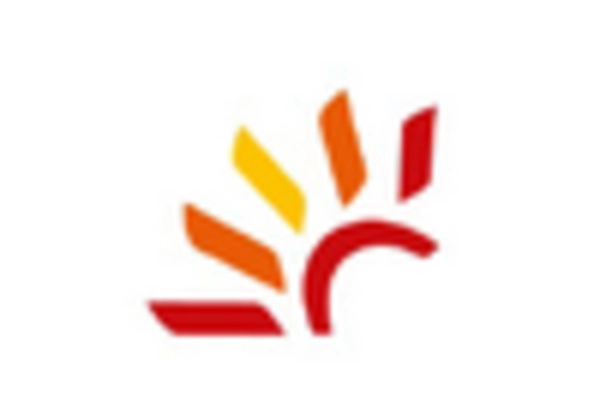Cost Reductions in Solar Technology
Cost reductions in solar technology are significantly influencing the Solar Tracker for Power Generation Market. The price of solar panels has decreased dramatically over the past decade, making solar energy more accessible. As the cost of solar installations declines, the economic viability of solar trackers improves, as they can enhance energy output and return on investment. Market analyses suggest that the levelized cost of electricity from solar energy has fallen by nearly 80% since 2010, making it competitive with fossil fuels. This trend is likely to encourage more projects to incorporate solar trackers, as stakeholders seek to maximize efficiency and profitability in their solar investments.
Increasing Demand for Renewable Energy Sources
The growing demand for renewable energy sources is a primary driver of the Solar Tracker for Power Generation Market. As concerns over climate change intensify, there is a marked shift towards sustainable energy solutions. Solar energy, being one of the most abundant resources, is increasingly favored by both consumers and businesses. Reports indicate that solar power capacity has doubled in several regions over the past five years, with solar trackers enhancing the efficiency of these installations. This trend is expected to continue, as more entities seek to reduce their carbon footprints and transition to cleaner energy. Consequently, the solar tracker market is poised for substantial growth, driven by this increasing demand for renewable energy.
Rising Energy Needs and Infrastructure Development
Rising energy needs and infrastructure development are pivotal factors driving the Solar Tracker for Power Generation Market. As populations grow and urbanization accelerates, the demand for electricity is surging. This increasing energy requirement necessitates the expansion of renewable energy infrastructure, including solar power systems equipped with trackers. Many regions are investing heavily in renewable energy projects to meet future energy demands sustainably. Projections indicate that global electricity consumption could rise by over 25% by 2040, further emphasizing the need for efficient energy solutions. Solar trackers, by optimizing energy generation, are likely to play a vital role in meeting these rising energy needs.
Government Initiatives Supporting Solar Tracker Adoption
Government initiatives play a crucial role in the Solar Tracker for Power Generation Market, as many countries implement policies to promote renewable energy. Incentives such as tax credits, grants, and feed-in tariffs encourage investments in solar technologies, including solar trackers. For instance, various nations have set ambitious renewable energy targets, aiming for a substantial increase in solar power generation by 2030. This regulatory support is expected to bolster the market, with projections indicating that government-backed projects could account for a significant portion of new solar installations. As governments prioritize sustainability and energy independence, the demand for solar trackers is likely to rise, further propelling market growth.
Technological Advancements in Solar Tracker for Power Generation
The Solar Tracker for Power Generation Market is experiencing rapid technological advancements that enhance efficiency and reduce costs. Innovations such as dual-axis tracking systems allow solar panels to follow the sun's trajectory, increasing energy capture by up to 25% compared to fixed systems. Furthermore, the integration of smart technologies, including IoT and AI, enables real-time monitoring and predictive maintenance, optimizing performance. As a result, the market is projected to grow significantly, with estimates suggesting a compound annual growth rate of over 15% in the coming years. These advancements not only improve energy output but also make solar energy more competitive against traditional energy sources, thereby driving the adoption of solar trackers.















Leave a Comment